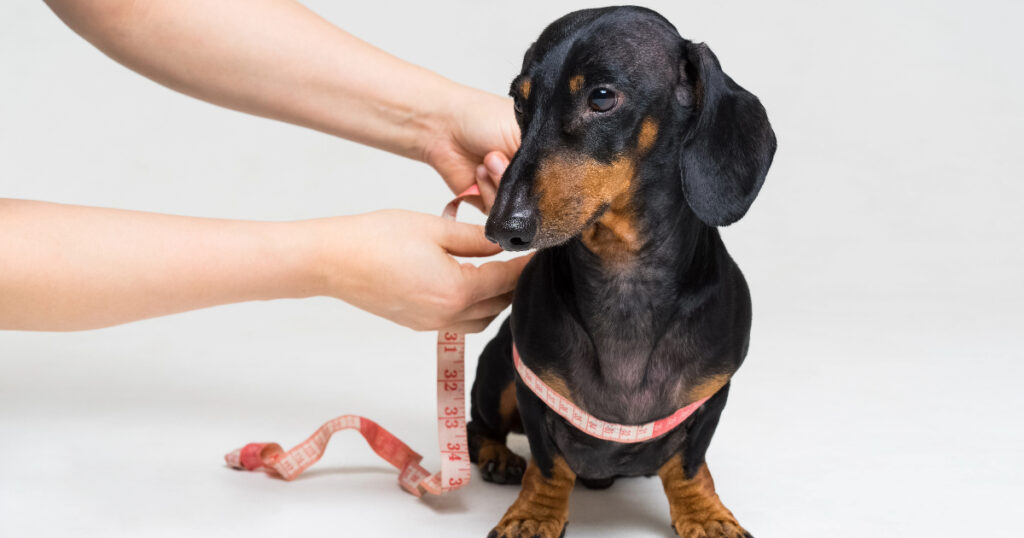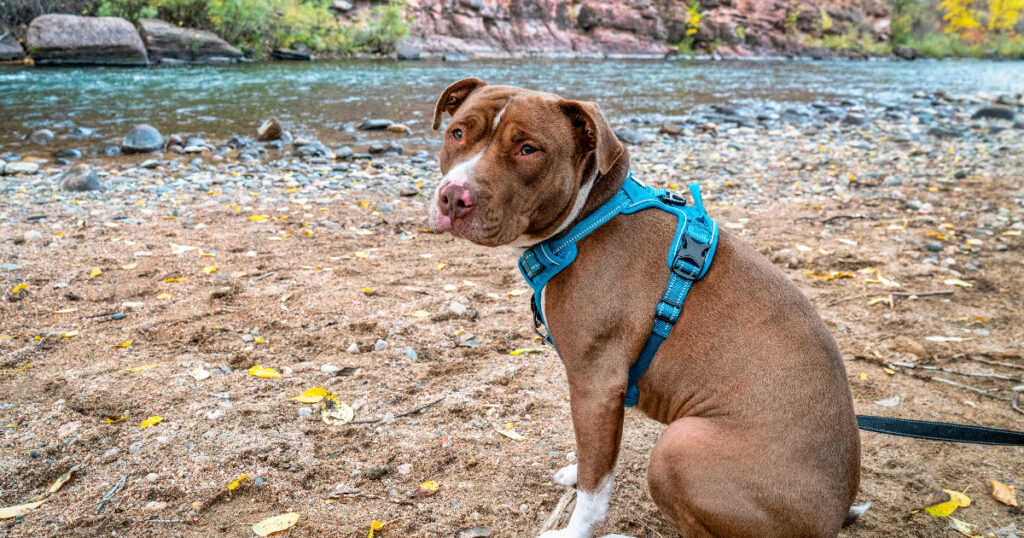Finding the right dog harness for your furry friend is key to keeping them comfortable and secure on walks. But with so many options out there, how do you ensure you select the proper size and fit?
We will walk you through everything you need to know about measuring your dog, finding the right harness, and adjusting it for an ideal snug fit. We’ll also explore the advantages harnesses offer over collars and tips for getting your dog comfortable wearing their new walking gear.
After reading, you’ll be fully prepared to pick out the perfect harness and harness your pup up for safe, happy adventures.
Measuring Your Dog for the Right Size Harness

Getting the proper size harness for your dog is crucial. A harness that’s too small will never close or be very uncomfortable. And a harness that’s too big can slip off, allowing your dog to escape during walks.
The first measurement to take is your dog’s chest circumference. To accurately measure their chest, start at the widest part of their ribcage and wrap a soft tape measure around their torso from bottom to top and back to bottom.
Next, measure your dog’s neck circumference at the thickest part, just above the shoulders. This is not where a collar usually sits – that area is more narrow.
Finally, weigh your dog. Many companies sell harnesses based on a dog’s weight, but body shape can vary a lot. Still, knowing their weight is helpful if the company uses it as a sizing guideline.
Once you have these three measurements, you can use sizing charts to select the right harness size. If your dog falls between sizes, choose the larger size for comfort.
How Tight Should a Dog Harness Be?
When putting on a dog harness, aim for a snug but not too tight fit. The best way to test this is the finger method.
Ideally, you should be able to slide one or two fingers under the full circumference of the harness, but no more. This ensures it’s not too loose for escape or snagging but also not too tight to cause discomfort.
Signs the Harness Isn’t Fit Correctly
It’s normal to make some mistakes when first using a dog harness. Here are signs that indicate the harness doesn’t fit properly:
- The dog can wiggle out of any part of the harness – it’s too loose
- There are signs of chafing or fur loss – it’s too tight
- The chest strap loosens during walks – too loose
- The back piece rotates out of place – too loose
If you notice these, try adjusting the straps first. If that doesn’t work, you may need to try a different size.
Types of Dog Harnesses

There are three main types of dog harnesses:
Front Clip Harness
Front clip harnesses have a leash attachment at the chest. They discourage pulling since the dog will turn to the side if they try to pull forward. However, the leash can get tangled between their legs.
Back Clip Harness
The most common type, back clip harnesses attach the leash between the dog’s shoulders. They don’t discourage pulling but reduce tangling risks.
Dual Clip Harness
These harnesses have both front and back clip options, providing versatility. They cost more but allow you to choose the clip based on the situation.
Tips for Getting the Right Fit
- Follow manufacturer sizing guides closely
- Measure your dog’s unique chest, neck, and weight
- Select a size where your dog falls in the middle of the range
- Start loose and tighten straps for a snug fit
- Test with the finger method as described above
- Check for signs of poor fit and make adjustments
- Consider a padded vest-style harness to prevent chafing
- Choose adjustable harnesses with multiple strap locations
- Ask for help at a pet store if needed
Why Harnesses are Better Than Collars
Switching from a collar to a harness has many advantages:
- Better control: Harnesses reduce leash tangling and make it harder for dogs to pull forward. You get more control over your dog’s body.
- Less strain: Pressure is distributed across the chest/shoulders rather than the delicate neck. Less risk of choking or neck injury.
- Escape-proof: A properly fitted harness makes it nearly impossible for a dog to back out of like it can with some collars.
- More comfort: Harnesses eliminate discomfort and choking risks from collar pressure on the trachea.
- Added features: Many harnesses have handy features like multiple leash attachment points, padding, and handles.
So take the time to find and properly adjust a harness for your dog. It will make walks more pleasant for both of you!
Getting Your Dog Comfortable With a Harness

If your dog seems scared of their new harness at first, here are some tips:
- Give treats as you show the harness and put it on the first few times. Create a positive association.
- Let them wear the harness briefly indoors with treats before going on walks.
- Ensure proper fit to avoid discomfort. Signs of discomfort can make dogs dislike the harness.
- Seek professional training help if your dog remains very reluctant about harness-wearing. Positive reinforcement methods can help them adjust.
With patience and the right introduction, your dog can get fully comfortable wearing their walking harness for years of happy adventures together!
FAQ
What are the key measurements I need for finding the right dog harness size?
You’ll want to measure the circumference of your dog’s neck, and chest, and know their overall weight. Neck and chest measurements are most important for getting the right fit. Measure the thickest part of their neck and around the widest part of their ribcage.
How often should I check that my dog’s harness still fits properly?
It’s a good idea to check harness fit regularly, especially if your dog is still growing or their weight fluctuates. Puppies can outgrow a harness quickly. Also, recheck if you notice signs of poor fit like chafing. Fully grown dogs only need harness checks every few months or if their body condition changes.
What’s the best dog harness for a puppy?
For puppies, look for an adjustable, padded vest-style harness with a top clip. The padding prevents chafing while the adjustable straps allow you to tighten as they grow. A top clip harness reduces leash tangling which is common with puppies still learning to walk politely.
Can I leave my dog’s harness on all day?
You should limit harness wearing to only during walks or other outdoor activities. Leaving it on too long can cause skin irritation. The exception is if your vet recommends a SUPPORT or LIFT harness for mobility or medical issues. Those can be worn continuously but still require regular fit checks.
Conclusion
Whether you’re an experienced dog owner or adopting your first pup, getting the right harness size and fit will make walking your dog much more pleasant. By following the measuring, fitting, and adjustment tips provided, you can ensure your dog’s harness is perfectly snug and comfortable.
While it may take some practice at first, soon you’ll be able to outfit your dog in their gear with ease. A properly fitted harness paired with training creates enjoyable walks and adventures for both you and your furry friend.
So get out the tape measure, try on some harnesses, and hit the trails together!

